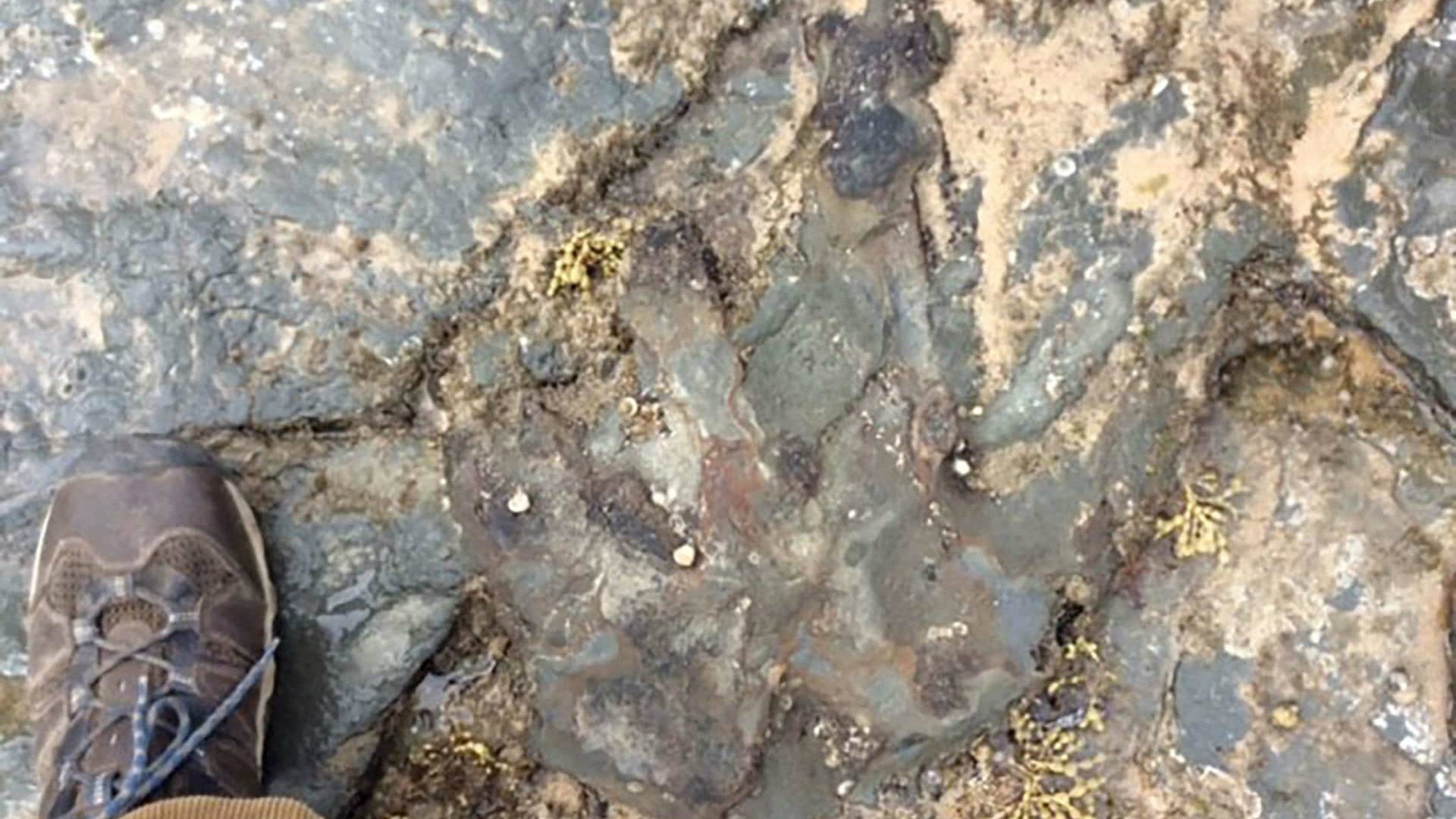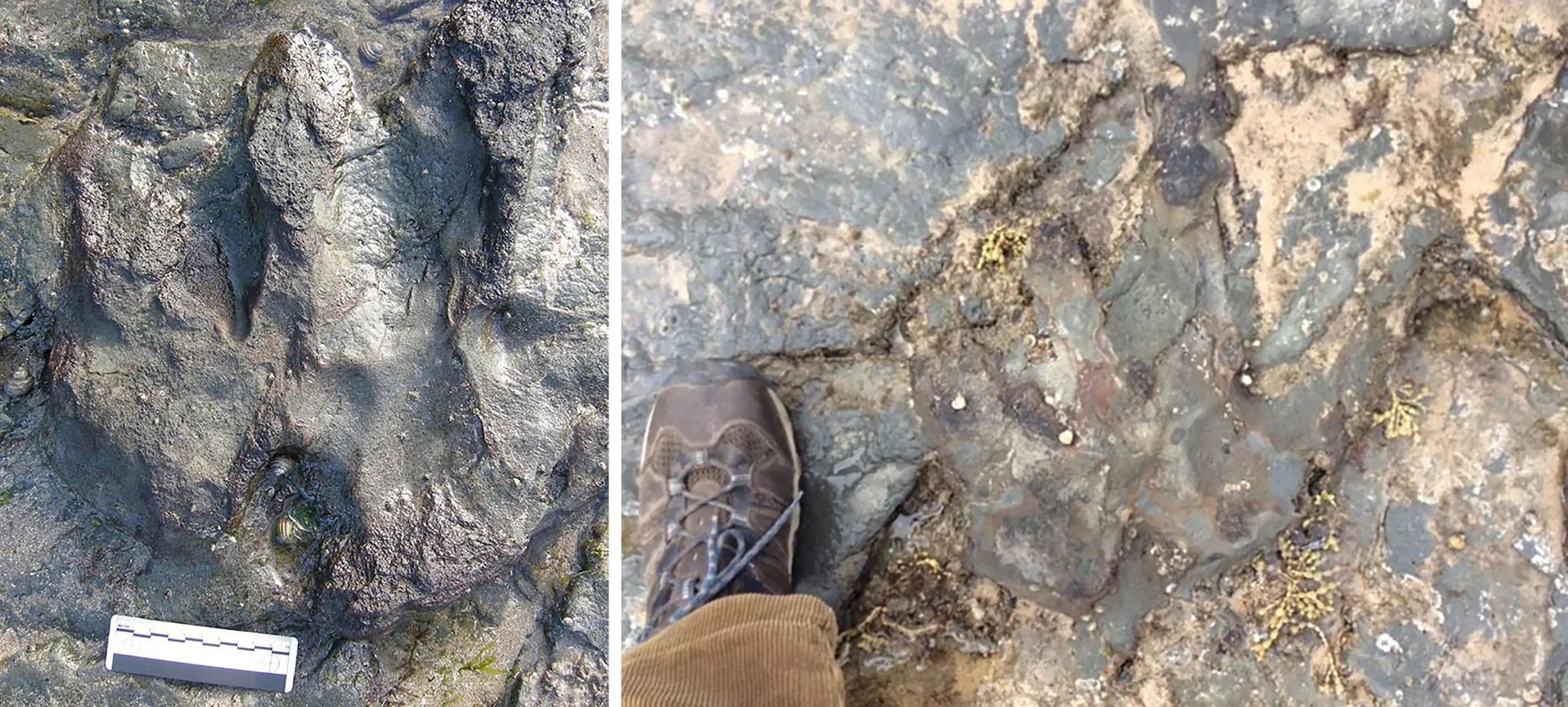Vandals smashed a 115-million-year-old dinosaur footprint with a hammer
A 115-million-year-old, three-toed dinosaur footprint in an Australian national park is virtually destroyed after vandals smashed it with a hammer.


A 115-million-year-old, three-toed dinosaur footprint in an Australian national park is virtually destroyed after vandals smashed it with a hammer.
The damage was discovered last week during a school tour of Bunurong Marine Park’s “Dinosaur Dreaming” attraction and confirmed by park officials yesterday (Dec. 19).
“It’s a popular, significant site. The rock there is reasonably hard so it looks like it’s been hit with a hammer and pieces of the rock around the edge of the footprint have been broken away,” Parks Victoria ranger team leader Brian Martin told Australia’s ABC news.
Why the print was especially rare
The Flat Rocks area of the park, where the footprint was discovered in 2006, is one of the few polar dinosaur sites in the world. (During the Early Cretaceous period, Australia was linked still to Antarctica and its climate was unlike any other region, which created fauna and flora unique to the time.)
After paleontologists made a silicone-rubber mold of the print, they decided to leave it as they’d found it, so that park visitors would be able to view it in its natural state.
Though the vandals’ motive is still unknown, Martin believes they were familiar with the footprint and its location because it’s camouflaged by seaweed and hard to see until you look closely. Fragments of the print were found in the area around the platform where it’s embedded.

Bunurong Marine Park has a rich history of paleontological discovery: Australia’s first dinosaur bone, the Cape Peterson Claw, was discovered there in 1903. Since then, more than 6,000 bones and teeth of small dinosaurs and other ancient animals have been found.
The footprint was an especially exciting because it represented a moment in time when a living, breathing dinosaur stood on that very spot. By contrast, dinosaur bones and fossils are usually deposited after being carried over long distances by currents from ancient rivers.
All may not be lost
Luckily, the footprint may not be gone forever—Mike Cleeland, education officer at Bunurong’s Environment Center, was able to retrieve some of the broken pieces and is hoping technicians at Museum Victoria will be able to rebuild it to some degree. Paleontologists also think the original silicone mold could be used to help restore the print.
National parks around the world have been aggressively policing vandalism in recent years: A New York woman was banned from all US national parks in 2016 after defacing protected rocks in at least eight parks with graffiti. In 2014, two Boy Scout leaders were sentenced to probation and narrowly avoided jail time after toppling an ancient rock formation. A criminal investigation was opened after actress Vanessa Hudgens carved her name into a rock in Coconino National Forest early last year.
The identity of the Australian vandals are still unknown. Parks Victoria announced it is opening an investigation into the incident.